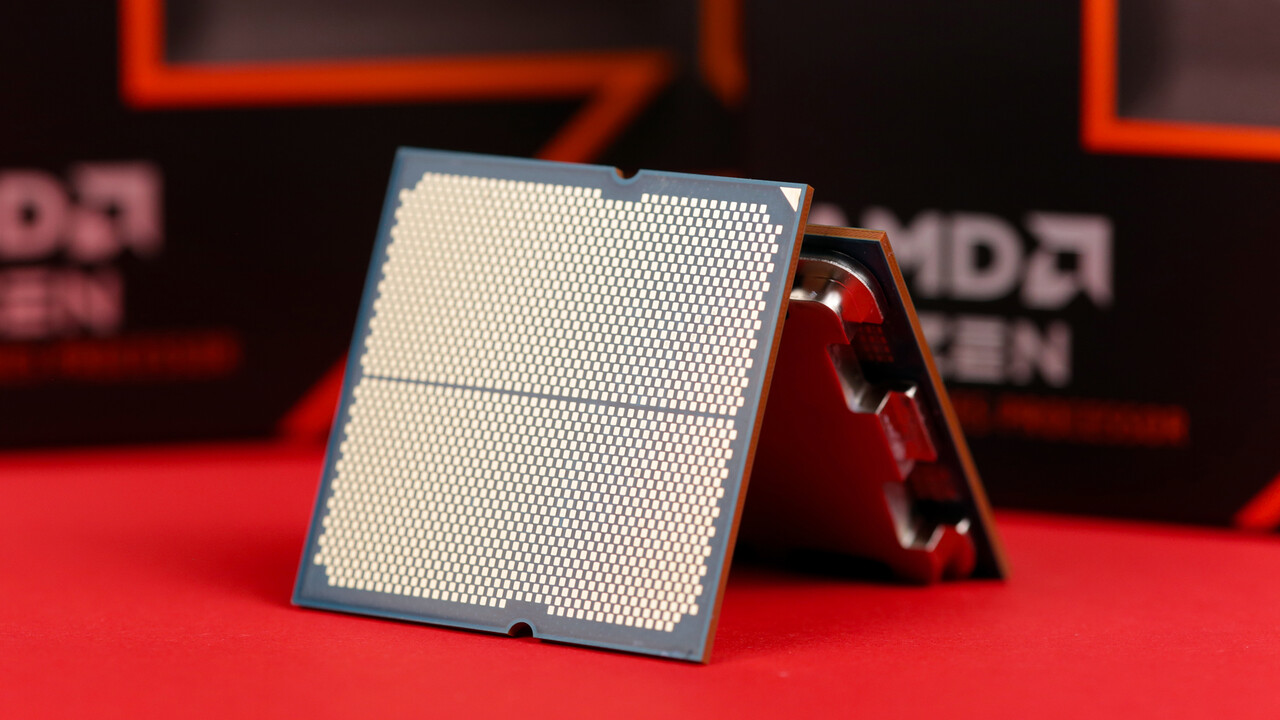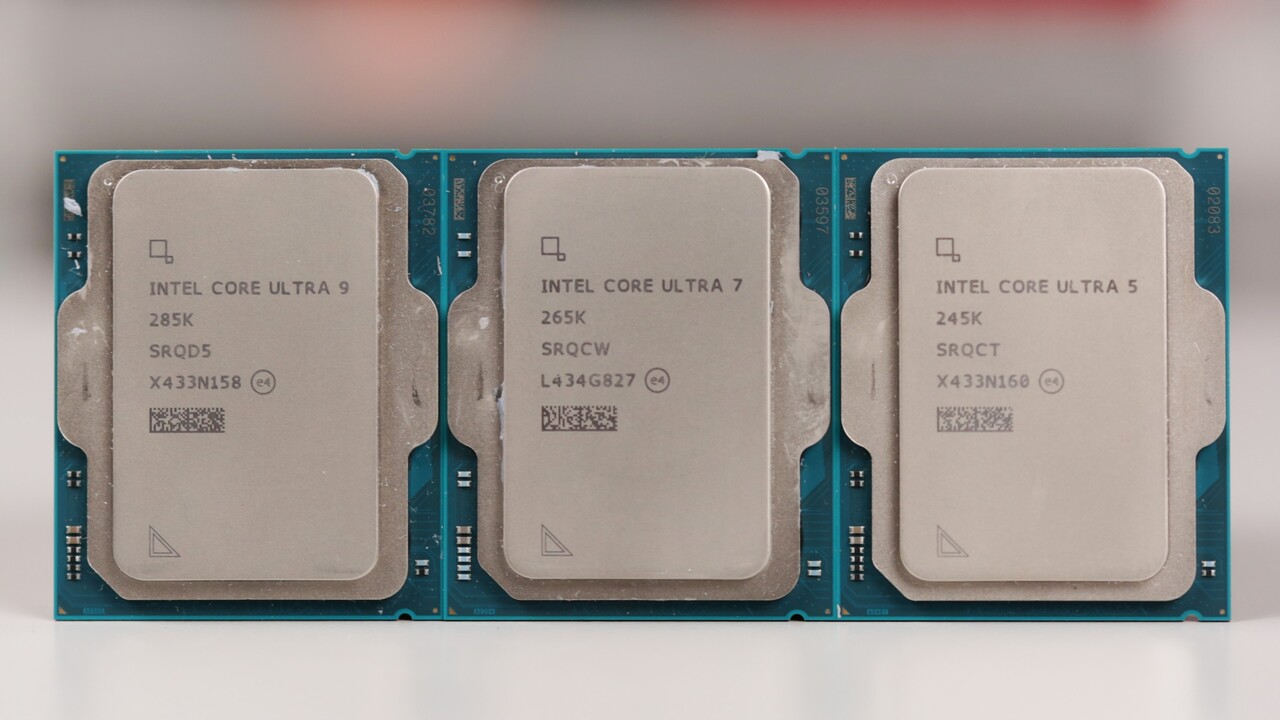CPU Overload: Arc B580 vs. RTX 4060 and RX 7600 on 4-24 Core CPUs 96 comments
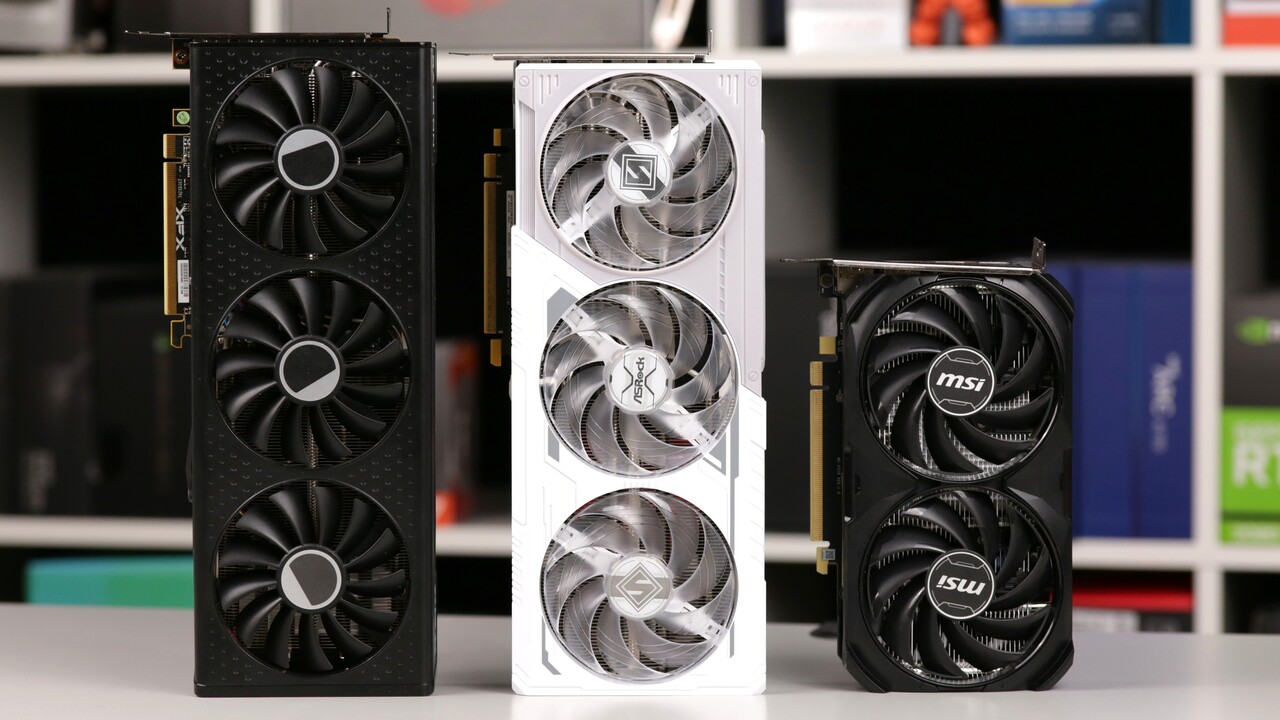
Intel’s Battlemage series graphics cards, also known as Arc B580 and B570, lose more performance on smaller/older CPUs than their direct competitors GeForce RTX 4060 and Radeon RX 7600 XT, as shown “CPU overload tests” on AMD Ryzen. This test with Intel Core processors from 4 to 24 cores confirms the problems.
Table of contents Arc B580 vs RTX 4060 & RX 7600 on processors from 4 to 24 cores The influence of “CPU overload” on FPSFirst tests with AMD Ryzen CPU overload tests on Intel CoreThree Intel processors from 4 to 24 cores Arc, GeForce and Radeon in comparison Results in Full HD (1080p) Performance evaluation Baldur’s Gate 3 Cyberpunk 2077 Frostpunk 2Ghost of Tsushima Horizon Forbidden West Senua’s Sage: Hellblade II Starfield Conclusion
The influence of “CPU overload” on FPS
The Intel Arc B580 12 GB (test) is a new challenger to the Nvidia GeForce RTX 4060 GB and the AMD Radeon RX 7600 XT 16 GB, as the test showed – with its advantages and disadvantages.
These statements were not only based on Techconseil, but also generally elsewhere on the interaction with a 600 euro gaming processor: the Ryzen 7 9800X3D. In a GPU test system, a very fast CPU is usually used to keep the bottleneck in this area as wide as possible – because the GPU is supposed to make the difference, not the CPU. If the CPU were slower, the graphics cards would be slowed down when in doubt because they wouldn’t receive enough work tasks from the CPU – the faster the GPU, the sooner.
But it has now been shown that with slower, smaller or older processors, Intel’s Arc graphics cards lose performance much sooner than competition from Nvidia and AMD. The reason: The Intel graphics card driver places more load on the processor (“CPU overload”), so smaller processors slow down Arc graphics cards sooner.
First tests with AMD Ryzen
Hardware Canucks got the ball rolling by explaining earlier this year that Intel’s Arc B580 had a problem on older systems because performance can drop massively there. A little later, Hardware Unboxed (HWUB) jumped on the bandwagon and repeated tests with very similar results: older Ryzen 5 2600/3600 showed drastic performance losses, but even on a Ryzen 5 5600, Arc was significantly behind GeForce and Radeon.
However, it cannot be completely ruled out that another factor played a role in the older processors in the HWUB test and their older platforms (keyword ReBAR, which Intel Arc urgently needs), therefore in a new update, the lower limit was AMD Ryzen 5.5600 was compared with Ryzen 7 9800X3D. The conclusion remains: Arc loses more than Radeon and GeForce.
In an update to the B580 test from December, a seven percent lead the B580 had over the 9800X3D turned into a one percent gap over the RTX 4060.
Intel itself requires a 10th generation central processor with rBAR or an AMD Ryzen 3000 with Smart Access Memory (rBAR) for new Battlemage graphics cards.
CPU Overload Testing on Intel Core
After the madness of CES in the first days of January, the editorial team wanted to come back to some undoubtedly interesting observations. In order to add a different perspective to the values measured with AMD Ryzen, three systems with Intel Core were implemented.
Three Intel processors with 4 to 24 cores
With Intel Core i processors, it is relatively easy to image across multiple cores and generations, since the “old” platform with LGA 1700 has core processors from the 12th to 14th generation with only 4 to 24 cores over two generations P-Core.
The smallest and oldest model in the test is the Intel Core i3-12100F (test), based on the Alder Lake architecture, which is now almost four years old. This CPU is still easily available in stores today, available at prices starting at 59 euros.
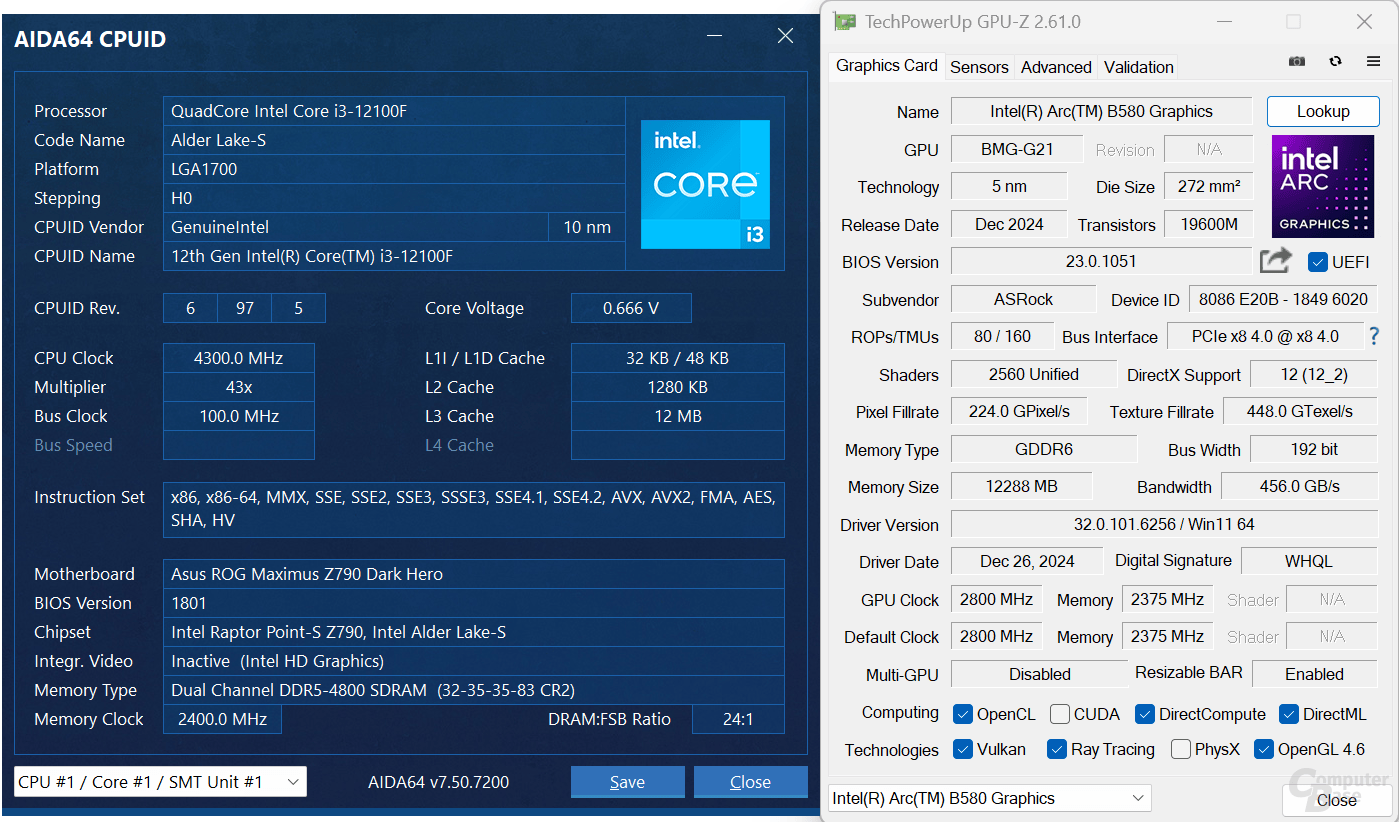 The Intel Arc B580 on an Intel Core i3-12100F “Alder Lake” with only four P-Cores. It is also increasingly new: the Core i5-13600K (test) is well known and widely used. With 6P+8E cores, it is also representative of some newer processors: an Intel Core i5-14500, for example, has the same cores and is almost identical in terms of clock speed. An Intel Core i5-13600KF, i.e. the version without active graphics unit, can currently be purchased in a tray version at a very favorable price starting from 210 euros. The last processor in the group is the Intel Core i9-14900K (test), about which many words should not be wasted. It still represents the best gaming performance at Intel after Arrow Lake failed to deliver on its promises on this score.
The Intel Arc B580 on an Intel Core i3-12100F “Alder Lake” with only four P-Cores. It is also increasingly new: the Core i5-13600K (test) is well known and widely used. With 6P+8E cores, it is also representative of some newer processors: an Intel Core i5-14500, for example, has the same cores and is almost identical in terms of clock speed. An Intel Core i5-13600KF, i.e. the version without active graphics unit, can currently be purchased in a tray version at a very favorable price starting from 210 euros. The last processor in the group is the Intel Core i9-14900K (test), about which many words should not be wasted. It still represents the best gaming performance at Intel after Arrow Lake failed to deliver on its promises on this score.
Processors with four, six and eight P cores are available for testing, the first does not use any E cores, the 13600K uses eight, the 14900K also uses 16 E cores. All three processors are based on the same Z790 motherboard with the latest Intel BIOS (all specifications are met), the processors operate according to the Intel profile specifications, as does the memory. In Windows 11 24H2 in the latest version, all security features are enabled.
Arc, GeForce and Radeon in comparison
In addition to the Intel Arc B580 in the form of the partner model ASRock Arc B580 Steel Legend (test) and the current 6256 driver, the MSI GeForce RTX 4060 Ventus Black OC (8 GB) with GeForce 566.36 and the XFX Radeon RX 7600 XT The Quick 309 (16 GB) are included Adrenaline 24.12.1 tested. The selection of game titles is based on the processor test course, but the resolution has been increased from 720p to 1080p and the settings have also been adjusted slightly. The values are therefore not comparable to previous ones or to those of other tests. All three graphics cards well exceed the 60 FPS mark on average on the fastest processor in the test. But what about weaker processors?
Results in Full HD (1080p)
The games used were selected from the current CPU gaming benchmark course without specifically looking at the CPU requirements.
Performance evaluation
The average FPS shows that there is practically no difference between an Intel Core i9-14900K or an Intel Core i5-13600K: Intel Arc, Nvidia GeForce and AMD Radeon are approximately on the same level here.
But if the processor then becomes significantly weaker and uses four cores that are only three years old, larger differences appear. However, while the GeForce and Radeon only lose around seven to eight percent in performance, the Intel Arc B580 lags twice as far behind at minus 15 percent.
The image is a little more visible at the moments of the frame. The Radeon now finishes just ahead of the GeForce, so it loses the least on average. The Arc B580, in turn, is losing even more ground, and with the now slower CPU performance, the B580’s raw performance cannot be pushed through the bottleneck. Solutions from AMD and Nvidia can do this better.
A look at the individual results shows: There are three titles in particular that are causing Arc to lose ground on average: Baldur’s Gate 3, Cyberpunk 2077, and Starfield. Frostpunk 2, on the other hand, even mitigates the drop somewhat compared to Arc and GeForce, because the 12100F is generally limited here and also significantly undercuts AMD and Nvidia. In Ghost of Tsushima, which runs extremely well on Arc itself, the B580 is completely unimpressed with the jump from 14900K to 12100F.
Baldur’s Gate 3
Cyberpunk 2077
Frostpunk 2
The Ghost of Tsushima
Horizon Forbidden West
The Sage of Senua: Hellblade II
Star Field
The main thing is that the results obtained thanks to Hardware Canucks and Hardware Unboxed also appear in other systems with completely different configurations: Intel’s Arc graphics cards lose contact with GeForce and Radeon with weaker processors – not in all games, but tend to do so and so even on average, the effect is greatest for Arc.
Just this week, Intel launched another processor, the Core Ultra 3 205, which only has four P cores, although it now also has four E cores. Since the gaming performance on Arrow Lake is lower than the previous generation, there are new processors, even from the same company, that have a greater impact on an Arc compared to the GeForce and Radeon and shift the performance picture known from many tests to the disadvantage of the Intel graphics card would do in practice. Intel’s recommendation that the Arc B580 use at least a Core i-10000 or an AMD Ryzen 3000 applies only to functionality, not to maximum performance. Even Intel offers 10th and 11th generation processors and the corresponding motherboards that come with a footnote. Without laymen having to do any preliminary research, only platforms from the 12th core generation can really meet all the requirements – and, as this test has shown, there are still performance losses compared to the competition with smaller processors.
Conclusion
There was no clear recommendation for the new Intel Arc B580 12 GB (test) and Arc B570 10 GB (test) graphics cards on Techastuce, the new findings make the topic even more complex. The benchmarks collected so far, which show Arc in hand-to-hand combat with GeForce and Radeon, were created on the fastest gaming processor available: the Ryzen 7 9800X3D. But on slower or older processors, the situation quickly changes because Arc has more problems than GeForce or Radeon. The more the load is concentrated on the CPU, the more visible the differences become. And Arc targets gamers outside of high-end gaming systems and thus also high-end gaming processors with the 500 series.
CPU Overload: Arc B580 vs. RTX 4060 and RX 7600 on 4-24 core CPUs
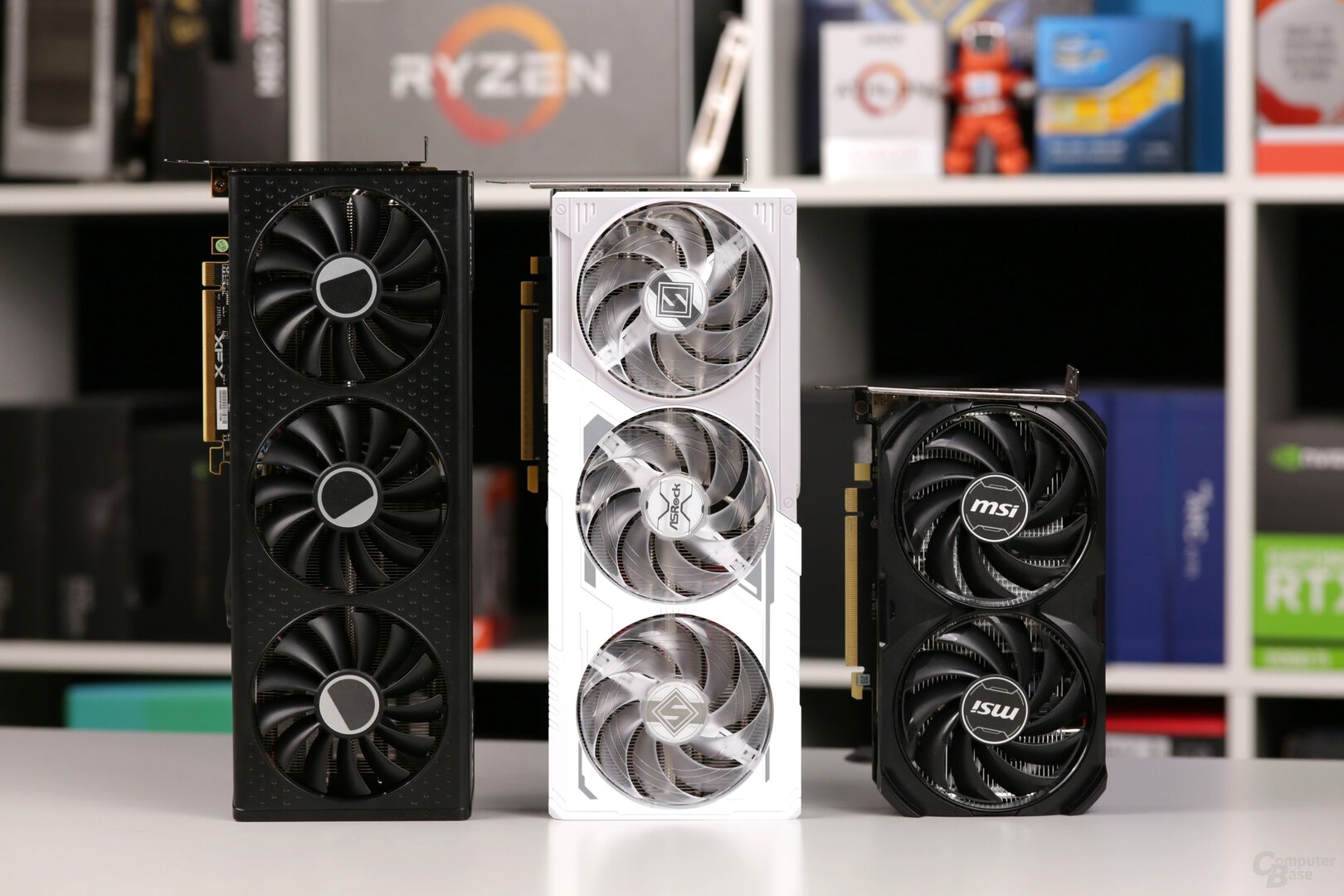 At the end of this additional test, the answer to the question of whether an Arc, a GeForce or a Radeon should be found in the computer in the price range “around 300 euros” is clearer than before. Gamers whose processor is not a high-end model will do better with a 16 GB Radeon RX 7600 XT. Because the Radeon RX 7600 Arc B580 is barely cheaper in Germany, the conclusion in this country is still a little clearer than in the USA, where Intel Arc has a clearer price advantage compared competition can.
At the end of this additional test, the answer to the question of whether an Arc, a GeForce or a Radeon should be found in the computer in the price range “around 300 euros” is clearer than before. Gamers whose processor is not a high-end model will do better with a 16 GB Radeon RX 7600 XT. Because the Radeon RX 7600 Arc B580 is barely cheaper in Germany, the conclusion in this country is still a little clearer than in the USA, where Intel Arc has a clearer price advantage compared competition can.
Was this article interesting, useful, or both? The editorial team appreciates any support from Techoutil Pro and disabled ad blockers. Learn more about ads on Techconseil.
Topics: AMD Arc GeForce GeForce RTX 4060 graphics cards Intel Nvidia Radeon Radeon RX 7600 XT processors

Marc deciphers processors by testing their performance for gaming, content creation, and artificial intelligence.
